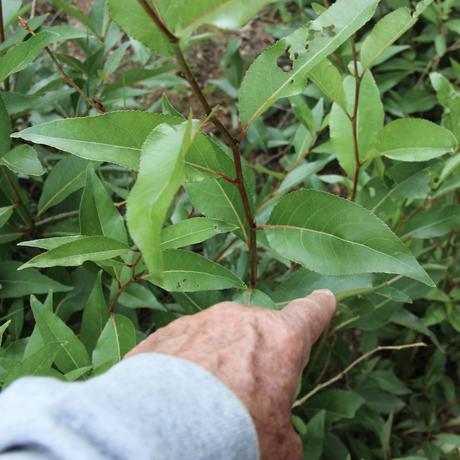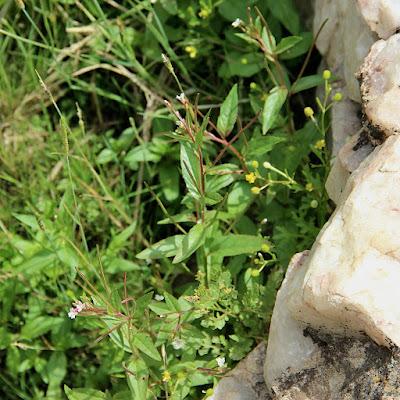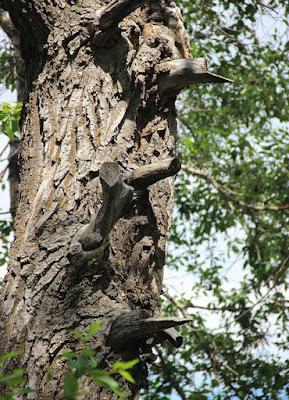
Balsam poplars c. 0.5 mi west of the Happy Jack Trailhead, Laramie Mountains.
Last month I didn't post a tree following report because when I got home from my travels and checked my tree, I realized ... I had chosen a dead tree! It had no leaves at all, in July. I looked around for another balsam poplar, but all I found were young saplings. What to do? Choose another kind of tree? I couldn't decide.
Several weeks later, on one of my regular summer hiking trails in the same general area, I was stopped in my tracks by ... a grove of balsam poplars! (photo above). Why had I never noticed them? Populus balsamifera is an uncommon species here, an outlier from its main range to the north. My only excuse is that the trail was a bit rocky and I had to watch my feet. However, the stand continued for some distance, to where the trail was smooth.

Leafy healthy trees.

Balsam poplar leaves are broadly lance-shaped, dark green above, noticeably paler beneath.
Suckers were coming up along the trail. How could I have missed these earlier?! Lost in thought I guess. Leaves on suckers were generally larger and greener.

Further along the trail was an excellent view of the grove, from the west. It includes several tree species, but they don't seem to mix within the stand, maybe because aspen are clonal, and balsam poplars can spread by suckering.

Note balsam poplar suckers invading the meadow.
The white feature in the meadow above may be an old well box. The inside has been taken over by willowherbs and buttercups, indicating the soil is wet. And it is surrounded by moisture-loving sedges (genus Carex). The quartz on the rim is local—a nice touch.

The challenge was to choose a tree to follow, one I would recognize on future visits. Most were roughly the same size, and grew fairly close together.

See what I mean? How to choose?

Two more poplars, with a stand of quaking aspen behind.
I soon found one obviously bigger than the rest, and I presume older. This is my tree. It is not dead. There are leaves in the canopy and on branchlets sprouting from the trunk.
Stout and gnarled.



This cut branch is twenty feet off the ground (measured with hand-span technology).
How did this happen? More than a few people will say the branches were cut when they were closer to the ground, back when the tree was younger and shorter. This stems (ha ha) from the common idea that trees grow taller from their base. But they don't. Lengthening occurs at the top and the tips of branches, at specialized apical meristems (same with roots). A branch that is twenty feet off the ground today was twenty feet off the ground when it formed (as well as when it was cut). Tree branches do not rise as a tree grows taller (see Will a Tree’s Branches Rise as It Grows?). So the mystery of the cut branches remains ... what do you think?Now I'm back in business, happily following a tree. I highly recommend it—interesting, easy, no commitment. More information here.


